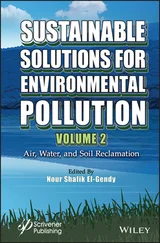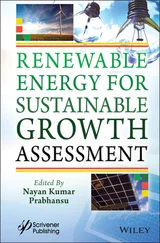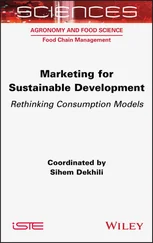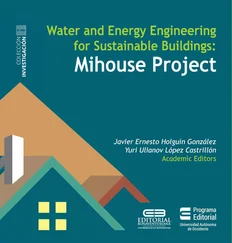The batch process is a customized form of batch fermentation. It is the most popular mode of operation of fermentation in the bioprocessing sector. Microorganisms are inoculated and cultivated under the batch system for a period of time after the introduction of nutrients to the fermenter in order to feed them. Fermentation is interrupted only when the fermentation broth volume approaches 75% of the bioreactor volume [86]. In the fed‐batch systems, the steady feed flow of the media substrate enables the target secondary metabolites to achieve very high concentrations/levels. The benefit of this method of culturing is that the fed substrate level can be managed at the target level (very often relatively low) [87]. This will allow the prevention of undesirable changes, like changes responsible for substrate inhibition or changes in cellular metabolism at a high concentration of substrate. Also, fed‐batch systems can be applied when large amounts of biomass are required [88, 89].
3.6 Substrate for Biosurfactant Production
The application of different industrial byproducts/waste from agro‐industrial or industrial processes used for the production of biosurfactant agents is a cost‐effective solution for waste management [33, 84, 90]. Industrial production of biosurfactants, such as the petroleum industry, the sugarcane/syrup industry’s starch, the sugar industry’s byproduct residues, fruit and vegetable processing, distilleries, and slaughterhouse animal fat [91], are shown in Table 3.1.
Table 3.1 Summary of various agricultural and industrial byproducts used for biosurfactant production and respective producing microorganisms.
Source: Modified based on Bhardwaj et al. [92] and Banat et al. [93].
| Microorganism |
Byproducts/Carbon sources |
| Pseudomonas sp. |
D‐glucose/Molasses/Paneer ‐whey |
| Pseudomonas sp. |
Vegetable oil/Rice water/Petroleum product/Milk whey |
| Bacillus subtilis |
Glucose/Sunflower oil amended with unrefined petroleum oil |
| Bordetella hinizi strain DAFI |
Sucrose/Molasses amended with unrefined petroleum oil |
| Trichosporon asahii |
Diesel engine/Motor oil |
| Pseudomonas aeruginosa strain LBI, Acinetobacter calcoaceticus |
Soapstock |
| Serratia marcescens |
Glycerin |
| Candida sp. strain SY‐16 |
Soyabean oil and D‐glucose |
| Pseudomonas aeruginosa strain SP4 |
Palm oil |
| Rhodococcus sp. |
Sucrose/Petroleum product/hydrocarbons |
| Bacillus subtilis, P. aeruginosa |
Edible oil/Refined petroleum product |
| Pseudomonas aeruginosa strain J4 |
D‐glucose/Refined petroleum product/Glycerin/Olive oil/Sunflower oil |
| Pseudomonas aeruginosa strain EM1 |
D‐glucose/Glycerin/Sucrose/n‐Hexane/Soyabean oil |
| Pseudomonas aeruginosa strain SR17 |
Cheese whey |
| Bacillus licheniformis strain KC710973 |
Orange‐peel |
| Pseudomonas sp. strain NAF1 |
Solid‐waste from dates and condensed fermented corn extractives |
| Pseudomonas cepacia strain CCT6659 |
Waste frying rapeseed oil and condensed fermented corn extractives |
| Bacillus subtilis strain LAMI005 |
Purified CAJ (cashew‐apple juice) |
| Candida lipolytica strain UCP0988 |
Animal fat and condensed fermented corn extractives |
| Candida sphaerica strain UCP0995 |
Refinery residue of soyabean oil/condensed fermented corn extractives |
| Pseudomonas aeruginosa, B. subtilis, Pseudomonas aeruginosa strain GS3 |
Molasses |
| Bacillus subtilis strain ATCC 21332, Bacillus subtilis strain LB5 |
Cassava flour, wastewater |
| Bacillus subtilis |
Sweet potatoes |
| Bacillus subtilis |
Potato waste |
| Bacillus sp. |
Engine oil |
| Bacillus subtilis strain ATCC 21332 |
Potato waste |
| Candida antarctica , Candida apicola |
Oil refinery waste |
| Candida bombicola, Candida lipolytica |
Rapeseed oil |
| Candida lipolytica |
Industrial residue |
| Candida sp. strain SY16 95 45, Pseudomonas aeruginosa strain AT10 |
Soyabean oil and waste |
| Pseudomonas cepacia |
Sunflower oil |
| Cladosporium resinae |
Jet fuel JP8 |
Biosurfactant production by using industrial waste is used:
to achieve lower operating costs,
to achieve higher affordability of different low‐cost sustainable substrates,
to achieve large quantities of substrates universally available for production purposes,
to retain the natural features of the final product,
to create products that are non‐toxic for microbial growth,
to ensure that the product components are environmentally friendly and safe [94].
The next sections discuss the research carried out on the development of biosurfactants by utilizing various waste by‐products or agricultural by‐products.
3.6.1 Production of Biosurfactant with Food and Vegetable Oil Waste
Vegetable oil processing units produce significant quantities of garbage and byproducts (like soap products, oilseed cakes, lipid residues, semi‐solid effluents, and water‐soluble effluents) that are rich in fats, oils, and other compounds [91]. Such waste products have become a major source of pollution in the hydrosphere and lithosphere because of their low biodegradable lipid content. This being so, it is crucial to deploy waste material as a substrate for product formation since it puts such waste to more constructive use.
Mercade et al. [95] presented the application of olive‐oil mill effluent as a substrate for rhamnolipid biosynthesis using Pseudomonas sp. JAMM with 0.058 g/g biosurfactant production by using 100 g/l of olive oil mill effluents and NaNO 3(2.5 g/l). The glycolipids produced in this process reduced the media surface tension from almost 40 to around 30 mN/m. In another study conducted by Abalos et al. [96], the application of Pseudomonas aeruginosa AT10 was reported for rhamnolipid production using soybean‐oil refinery waste in the fermentation medium. They reported that P. aeruginosa AT10 produced 9.5 g/l of glycolipids with 26.8 mN/m surface tension and 122 mg/l critical micelle concentration (CMC) value. Benincasa et al. [97] documented that water‐immiscible waste (soapstock) from refining vegetable oil processing unit can be used as a substrate for rhamnolipid production of 15.8 g/l using P. aeruginosa LBI. Meanwhile De Faria et al. [98] supplemented raw glycerol as substrate produced from a biodiesel fermentation unit for surfactin (C14/Leu7) synthesis as sole carbon sources with 1.36 g/l final product. In another study, George and Jayachandran [99] communicated the use of waste coconut oil for rhamnolipid production (1.97 g/l) using P. aeruginosa . Similarly, Moya Ramírez et al. [100] evaluated the role of olive mill waste (OMW) as a substrate for rhamnolipid production using P. aeruginosa and reported production of 29.5 mg/l rhamnolipids. They found the rhamnolipids and surfactins production reached up to 299 and 26.5 mg/l under optimum fermentation conditions. Most of the above research findings used various types of lipid‐rich waste as a carbon source and Pseudomonas as a primary organism for rhamnolipid synthesis. They concluded that water‐immiscible substrate produced a better amount of biosurfactant than water‐miscible substrate, like fructose and glucose. The byproducts of food and vegetable oil used as raw materials for the production of biosurfactants are shown in Table 3.2.
Читать дальше












